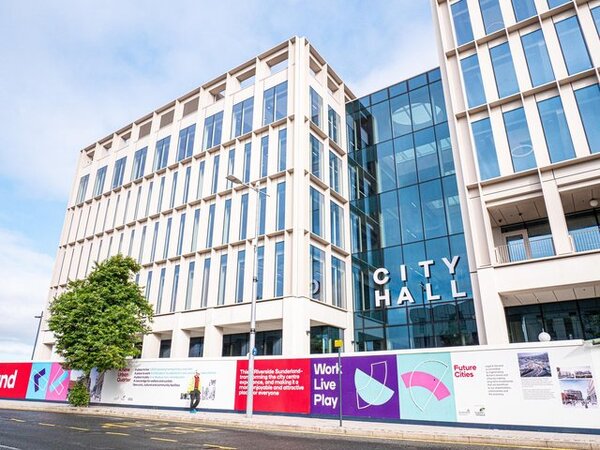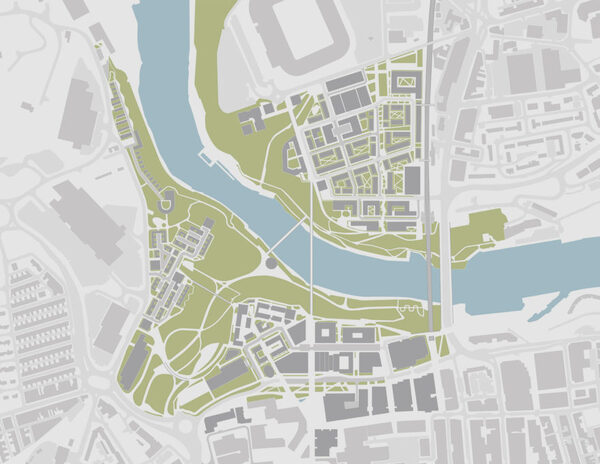Get updates from The Developer straight to your inbox Yes, please!
Riverside Sunderland, Sunderland – Sunderland City Council
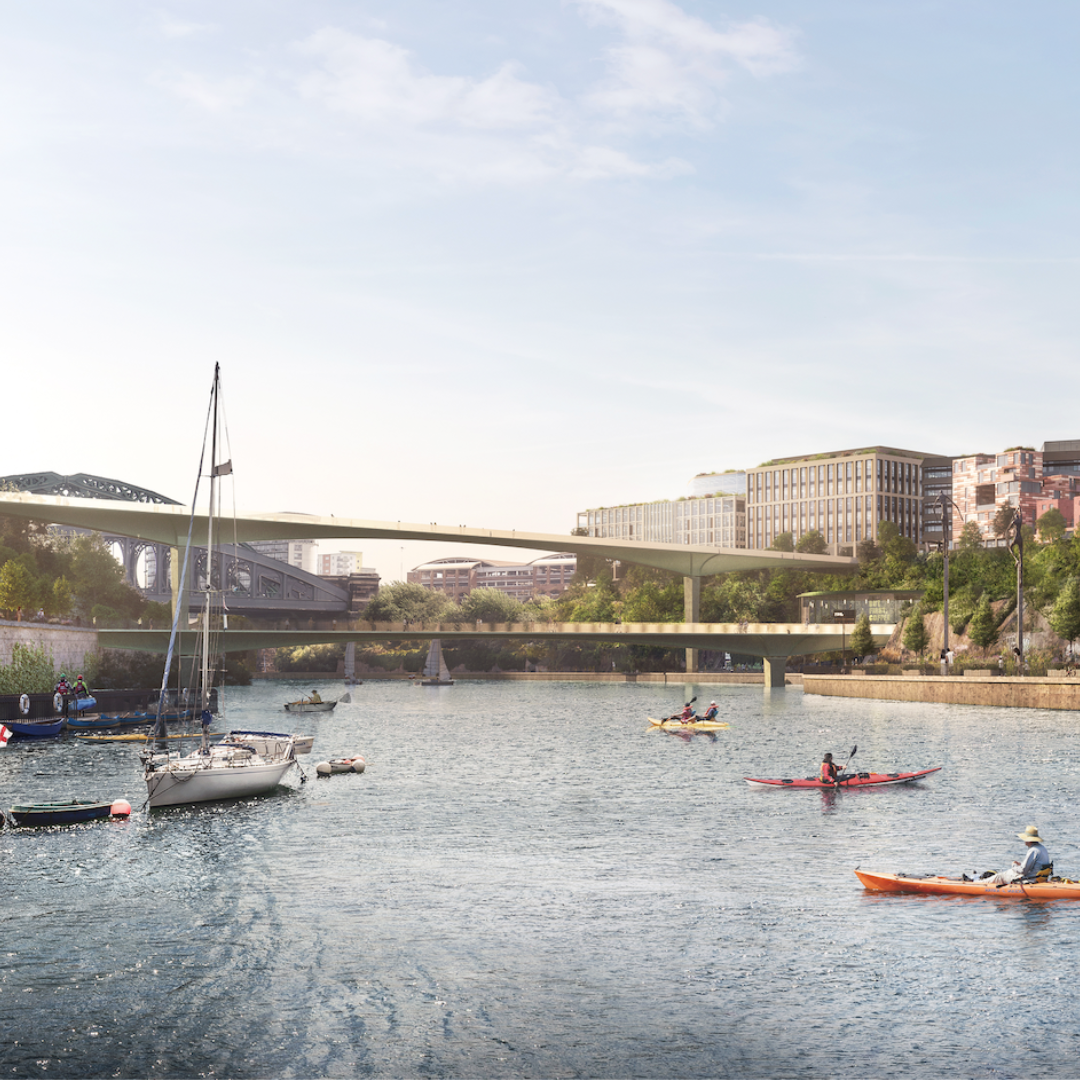
Riverside Sunderland will be a sustainable carbon neutral development created by zero-waste construction processes using MMC. Part of a masterplan that will double the resident population of Sunderland city centre from 2,500 to 5,000 and increase employment by 50%, when complete, 10,000 people will work at Riverside Sunderland. New leisure spaces include music venues such as the Auditorium and £80m Arena and a new digital library.
Where is the project located
Riverside Sunderland, Plater Way, Sunderland SR1 3AA
Who is the developer/client of the project?
Sunderland City Council
Describe the context of this project, its neighbourhood and people?
Riverside Sunderland is one of the UK’s most ambitious regeneration projects, that will reinvent a part of the city that has stood unused for 20 years.
On the edge of the city centre, the area’s transformation is being led by the city council and is built on strategic spending decisions, that sets a high benchmark for council intent - to the extent that the private sector appeal is undeniable. It is one of the most impressive examples of the public sector using its resources to the greatest possible effect, stimulating investment that will accelerate visionary plans for a stronger city and the wider ambition is that – by the time the regeneration project concludes, 10,000 people will work on Riverside Sunderland. Plans are also moving forward for a 1,000-home community, that will become home to 2,500 people, which will begin to form this summer. New leisure spaces will create magnet destinations that will attract thousands of people to Sunderland, with music venues like the Auditorium and £80m Arena and a new digital library – being described as the UK’s best – that will draw residents and visitors alike. It’s all part of a masterplan that will double the resident population of the city centre from 2,500 to 5,000 and increase employment by 50%, and that is gathering pace already, with more than £500m of development projects underway already.
Please describe your approach to this future place and its mix of uses. How will it function as a vibrant place? How does it knit into, and serve the needs of, the wider area?
The epicentre of Sunderland’s transformation, the riverside site will stimulate the wider regeneration of the whole city centre. From office spaces, to ultra-sustainable homes, leisure venues, parkland and public realm, this will be a diverse place – a vibrant riverside destination that will reinvent the city centre.
The development of new commercial properties will be a catalyst for businesses to move into the city centre. A £100m investment from Legal & General - which has paved the way for City Hall and two further offices to rise from the ground – will build on that establishing a Central Business District, that will see Riverside Sunderland transformed into the workplace of thousands.
With workers, the need for more homes… and aligned to Sunderland’s low carbon aspirations, the plan is to develop ultra-sustainable housing. As the site develops, open spaces will double up as allotment space where people can grow their own fresh produce, and rewilding will ensure it’s a biodiverse site.
Attractive public realm, that will include new walkways and pedestrian infrastructure – including the new River Wear footbridge that will connect both sides of the Riverside development - will knit into the wider city centre offer complimenting the cafes, bars, restaurants and retail spaces already operating in Sunderland.
Add leisure – from smaller cultural venues like the Auditorium – to the new £80m Arena, Sheepfolds and Culture House and the city centre will once again become a destination-city. A place people visit to enjoy.
What is the environmental impact of the project? How will the carbon use and material impact of the development be mitigated? What is the sustainability strategy?
Riverside Sunderland will be a sustainable carbon neutral development created by zero-waste construction processes.
Its residential neighbourhoods will be built using modern methods of construction (MMC), promoting digital technology, factory production, and improved whole-life performance of new homes. Arriving with minimal packaging and constructed with zero waste, the homes will also be equipped with smart wiring systems, solar panels that feed back into the National Grid and rainwater recycling pumps to reuse this natural resource where possible.
The masterplan for the area also outlines how to reduce material lifecycle impact by using components that will not become obsolete and may have the benefits of future use in other areas.
Decentralised energy networks will support decarbonisation at Riverside Sunderland, with individual homes generating and sharing energy to balance community demands. A community designed around energy reduction and clean energy, the project will boast intuitive systems to allow for local energy management and sharing by residents and building users. New homes will deliver ultra-high levels of efficiency, in line with recommendations from the independent Committee on Climate Change (CCC).
Orientation and massing of buildings will balance daylight and solar gain, and heating and hot water generation in all new developments will be fossil fuel-free.
The developments are designed to generate more energy than they need; meaning the surplus can then be shared with nearby properties by connecting into local power and heat networks.
Riverside Sunderland will also feature extensive walking and cycling networks and easy access to public transport, reducing car dependency.
Describe the social impact of the project: How will this future place contribute to the economic, environmental and social wellbeing of its citizens?
10,000 people will work from Riverside Sunderland when it is complete. And, with 2,500 people attracted to live on site, footfall and spend in the city centre will sky-rocket. But its impact will be felt during development too.
During construction of one building alone, a total of 179 weeks of work experience was delivered on site. The project enabled the upskilling of 37 workers, who completed a total of 257 weeks of training. 41 apprentices worked on the project and 28 new employment opportunities were created during construction – with available roles filled by people previously unemployed, three of whom had been out of work for over 12 months and five considered NEETs.
1,790 operatives were inducted on site. Utilising local labour meant 74% of the work was delivered by locals.
Subcontractors were encouraged to use local hotels – one saving 444,000 miles of car movements. Where practicable, diesel plant and machinery were substituted for electrical or battery operated. 17 electric mast climbers replaced diesel platforms, saving 6.8 tCO2e.
In total, over 66% of subcontractors were from within 30 miles of the site, delivering a £41m boost to the regional economy - 82% of the project spend. 69% of subcontractors were classified as MSMEs.
A string of local good causes were supported including Sunderland Food Bank. In addition, over £6,600 donations were provided locally.
As more projects get underway, the development of Riverside Sunderland will deliver huge local advantage, a key commitment of the Council on all developments it facilitates.
Gallery
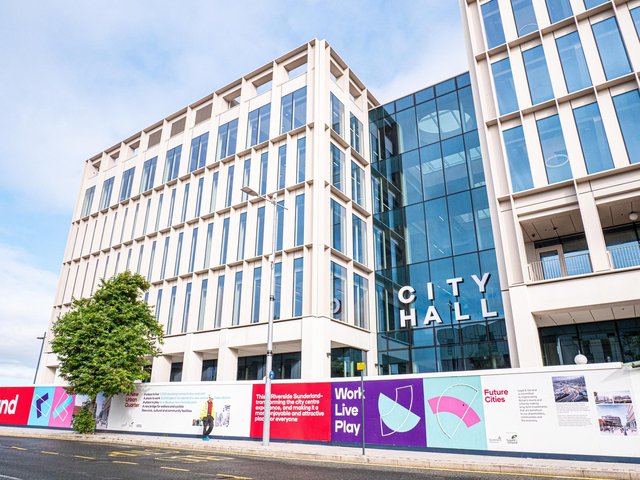
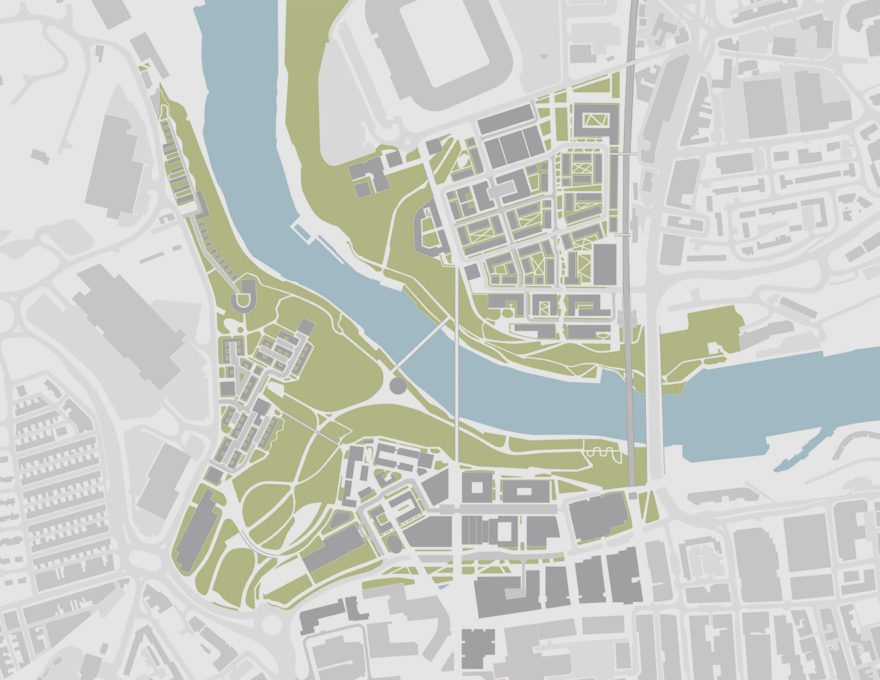
Sign up to our newsletter
Get updates from The Developer straight to your inbox
Thanks to our organisation members
© Festival of Place - Tweak Ltd., 124 City Road, London, EC1V 2NX. Tel: 020 3326 7238
